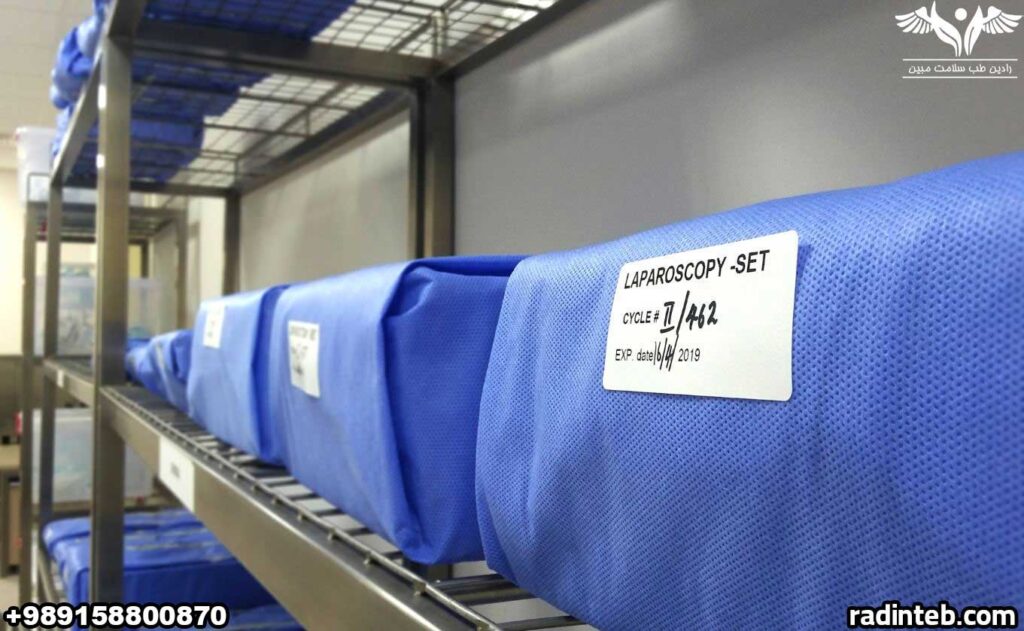
The Importance of Expiration Dates in Using Sterile Packs
Introduction
In every healthcare setting, the use of sterile surgical packs is essential for preventing hospital-acquired infections and ensuring patient safety.
However, one critical aspect that is sometimes overlooked is the expiration date of sterile packs. This date indicates the time frame during which the pack’s sterility remains guaranteed.
Using expired sterile packs can compromise the safety of medical procedures and increase the risk of infection.
Why Expiration Dates Matter
Sterilization is not a permanent condition. Over time, environmental factors such as humidity, temperature, air exposure, and handling can degrade the sterile barrier system.
The expiration date ensures that the sterility and safety of the pack are valid only within a specific time frame.
Once that period passes, the pack may no longer be sterile — even if it looks intact.
Key Factors Affecting Shelf Life of Sterile Packs
- Packaging Material: Multi-layer, moisture-resistant packaging extends sterility duration.
- Storage Conditions: A dry, cool, and dust-free environment preserves sterility longer.
- Sterilization Method: Steam-sterilized packs usually have shorter shelf lives compared to ethylene oxide (ETO)–sterilized ones.
- Handling Frequency: The more a pack is moved or touched, the greater the risk of micro-tears or contamination.
Consequences of Using Expired Sterile Packs
Using sterile packs beyond their expiration date may lead to:
- Increased risk of postoperative infections
- Longer recovery periods and higher treatment costs
- Legal and ethical liabilities for healthcare staff
- Reduced patient trust and institutional reputation
Observing expiration dates is therefore not only a technical requirement but also an ethical obligation toward patient safety.
How Manufacturers Determine Expiration Dates
Expiration dates are determined through stability testing under controlled conditions of temperature, humidity, and time.
These tests help manufacturers define the exact duration that sterility remains intact.
Thus, the expiration date printed on the label is scientifically validated, not an arbitrary number.
Quality Control and Expiration Monitoring
Hospital quality control units (QC) are responsible for routinely checking sterile pack expiration dates.
Packs nearing expiration should be prioritized for use or safely replaced.
This monitoring system ensures that no expired sterile pack ever reaches the operating room.

Staff Training on Expiration Awareness
Regular staff training plays a vital role in minimizing human errors.
Workshops on label reading, pack identification, and proper storage methods increase awareness and accountability.
Advanced hospitals often use automated inventory systems that issue alerts when expiration dates are approaching.
International Standards for Sterile Pack Expiration and Safety
Ensuring the sterility and safety of medical packs requires strict compliance with global standards and regulatory guidelines. These standards describe how manufacturers validate sterilization, maintain the integrity of packaging, and establish accurate expiration dates.
Some of the most recognized international standards include:
-
ISO 11607-1 & ISO 11607-2 – Define the requirements for packaging materials, sealing, and validation processes for terminally sterilized medical devices.
-
AAMI ST79 (Association for the Advancement of Medical Instrumentation) – Provides comprehensive guidelines for steam sterilization, packaging, storage, and expiration management in healthcare facilities.
-
EN 868 Series (European Standards) – Specifies performance requirements for packaging materials used in sterilization.
-
FDA and WHO Guidelines – Outline documentation, labeling, and quality assurance protocols to ensure safe use of sterile products globally.
By following these international standards, companies like Radin Teb ensure that each sterile pack maintains its integrity and sterility throughout its entire shelf life, providing hospitals and surgical centers with maximum safety, reliability, and regulatory compliance.
Impact of Expiration Management on Brand Credibility
Manufacturers that clearly label and guarantee the shelf life of their products show strong commitment to patient safety.
This transparency builds trust among healthcare facilities and strengthens brand reputation.
At Radin Teb, every sterile pack is produced and labeled according to international sterilization and safety standards — ensuring reliability, traceability, and long-lasting sterility.
❓ Frequently Asked Questions (FAQ)
1. Can an expired sterile pack be used if the package looks intact?
No. Even if the pack looks intact, it no longer ensures that the contents remain sterile after expiration.
2. What’s the difference between the production date and the expiration date?
The production date indicates when sterilization occurred; the expiration date defines how long sterility remains valid.
3. What should be done if the expiration label is missing or unreadable?
When the expiration label is missing or unclear, healthcare personnel must discard the pack right away to ensure patient safety.
4. Can improper storage shorten the expiration period?
Yes. Exposure to humidity, heat, or direct light can compromise sterility before the stated expiration date.
5. How long are Radin Teb sterile packs valid?
Depending on the sterilization method, Radin Teb’s sterile packs typically have a shelf life of 6 months to 2 years, as clearly indicated on each label.

